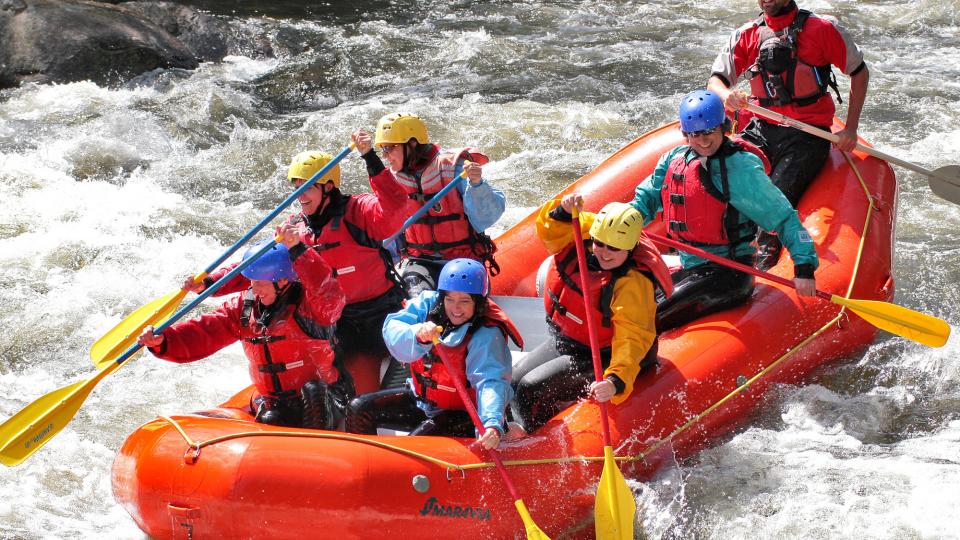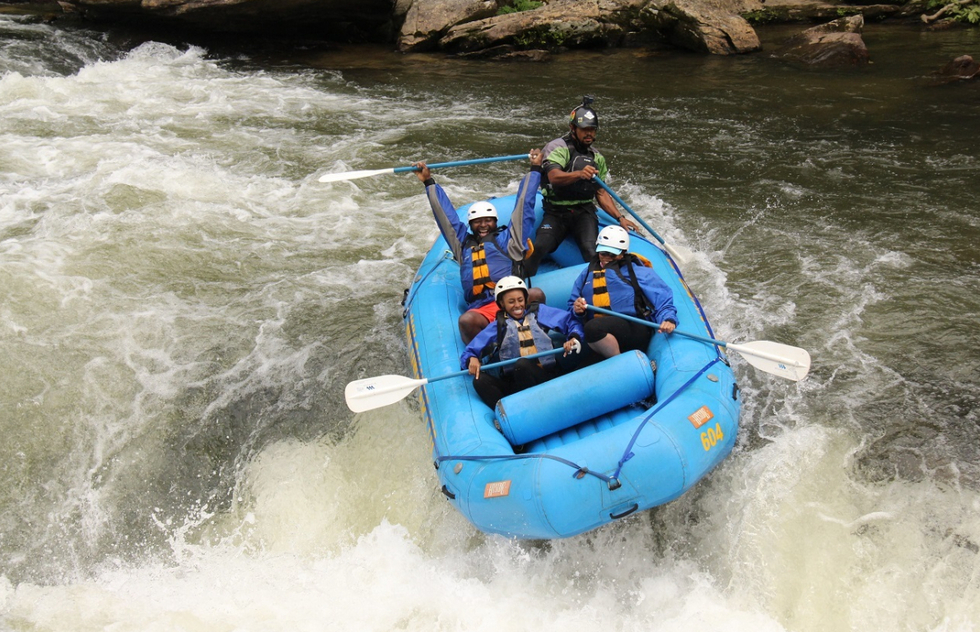Vital Skills for Water Rafting
Understanding the art of water rafting needs a mix of exact abilities and knowledge to browse the uncertain currents of rivers, making it a thrilling yet potentially harmful activity. As lovers tailor up to get started on their next experience, it is essential to furnish oneself with vital competencies that go past just paddling. From understanding the complexities of river characteristics to swiftwater rescue methods and seamless group communication, the journey down the river requires a mix of knowledge and versatility. With safety and security protocols working as a keystone, participants are faced with a multifaceted challenge that necessitates a careful strategy and steadfast focus.
Paddling Strategies
Understanding efficient paddling techniques is essential for browsing water plethoras securely and efficiently. Proper paddling not only moves the raft ahead but additionally aids in steering and navigating via varying water conditions. One basic method is the forward stroke, where paddlers dip the blade fully into the water and draw it back alongside the plethora to produce propulsion. Timing and control are crucial to make certain that all paddlers remain in sync, making best use of the power of each stroke.
Apart from the forward stroke, the draw stroke is vital for making fast modifications or pulling the plethora closer to an object. By positioning the paddle blade perpendicular to the water's surface and drawing the water towards the boating, paddlers can efficiently transform the vessel's instructions. Moreover, the backstroke works as a valuable device for backing up or decreasing the boating when needed.
River Reading
Effective paddling strategies, such as the forward stroke and draw stroke, play a crucial role in browsing and analyzing river currents, a skill known as river analysis. River analysis involves the capability to examine the speed, deepness, and instructions of the water circulation to make enlightened choices while navigating rapids. By recognizing how the water moves barriers and through various channels, rafters can select the best path to securely go across the river.
One key aspect of river reading is acknowledging various kinds of currents, consisting of hydraulics, swirls, and waves, and comprehending how they can affect the raft. Eddies, as an example, are locations where the water flows in a circular movement, often giving possibilities for rest or calculated maneuvers. Waves can suggest the existence of rocks or obstacles, calling for fast adjustments in paddling method. Hydraulics, frequently called "holes," are areas where water recirculates back upstream, posturing potential risks to plethoras.
Grasping the ability of river reading is crucial for risk-free and delightful rafting experiences, enabling paddlers to navigate tough waters with self-confidence and accuracy.

Swiftwater Rescue
Comprehending swiftwater rescue methods is crucial for water rafting lovers to respond properly in emergency situation scenarios on fast-flowing rivers. Swiftwater rescue includes a set of specialized abilities and understanding aimed at securely removing people from swift-moving water. One crucial element of swiftwater rescue is identifying the hazards existing in fast-flowing rivers, such as strainers, undercut rocks, and solid currents, to prepare and perform successful rescue procedures.
Correct devices is essential for swiftwater rescue, consisting of toss bags, rescue ropes, helmets, and personal flotation gadgets. Rafting enthusiasts should be experienced at using this devices in high-stress situations to make sure the security of themselves and others. Additionally, swiftwater rescue strategies commonly involve synergy and sychronisation among rafters to implement complex rescue maneuvers successfully.
Learning swiftwater rescue is extremely suggested for individuals involving in water rafting tasks, as it equips them with the essential abilities to handle emergency situations promptly and successfully. White Water Rafting Colorado. By recognizing and practicing swiftwater rescue strategies, water rafting enthusiasts can enhance their safety which of their fellow rafters on tough river explorations
Team Communication
Efficient teamwork in water rafting counts greatly on seamless communication among staff member to make sure worked with and risk-free navigation with challenging river problems. Clear this website and concise communication is important for the success of any rafting expedition. Staff member have to have the ability to effectively convey vital information such as paddling Visit This Link commands, caution signals, and navigational instructions.
In the often unpredictable and fast-paced setting of river rafting, precise and timely interaction can suggest the difference between an effective run and a possible catastrophe - White Water Rafting Colorado. Each group member plays a vital function in the overall interaction process, whether it be paying attention attentively to the overview's guidelines, passing on details to other paddlers, or signaling for aid when needed
Establishing a typical language and interaction system before hitting the water is crucial. This makes sure that every person gets on the exact same page and understands exactly how to connect successfully during the rafting trip. By cultivating a culture of open communication and common regard, rafting teams can boost their efficiency and safety and security on the river.

Safety And Security Protocols
In the context of water rafting, the foundation of team communication developed throughout expeditions is additional reinforced with rigid adherence to safety and security protocols. Safety methods are critical in ensuring the well-being of both rafters and guides throughout water rafting tours. One crucial safety method is the appropriate using of individual flotation tools (PFDs) by every individual on the plethora. PFDs are vital in emergency situations to keep individuals afloat and offer buoyancy. Furthermore, rafters should be well-versed in swiftwater rescue methods and procedures in case of someone falling too far or if the plethora tips over.
One more secret safety and security procedure is the thorough rundown given by guides prior to starting a rafting journey. This rundown typically consists of info on paddling methods, why not check here what to do in situation of various emergency situations, and signals made use of for interaction throughout the trip. It is essential to have designated safety kayakers accompanying the team to provide prompt support if required. By strictly adhering to these safety methods, water rafting trips can be both thrilling and risk-free for all participants included.
Final Thought
To conclude, mastering vital skills for water rafting is critical for a risk-free and delightful experience on the river. Paddling methods, river reading, swiftwater rescue, team communication, and safety protocols are all vital parts that add to a successful rafting journey. By sharpening these skills, rafters can browse difficult waters with confidence and ensure the safety and security of themselves and their employee.
Mastering the art of water rafting needs a combination of precise skills and knowledge to browse the unpredictable currents of rivers, making it a thrilling yet possibly dangerous task. By positioning the paddle blade perpendicular to the water's surface area and drawing the water in the direction of the plethora, paddlers can successfully transform the vessel's instructions.Understanding swiftwater rescue strategies is vital for water rafting fanatics to respond successfully in emergency scenarios on fast-flowing rivers.Reliable teamwork in water rafting relies heavily on seamless interaction among group participants to guarantee worked with and safe navigation via tough river problems.In final thought, mastering vital skills for water rafting is crucial for a risk-free and pleasurable experience on the river.